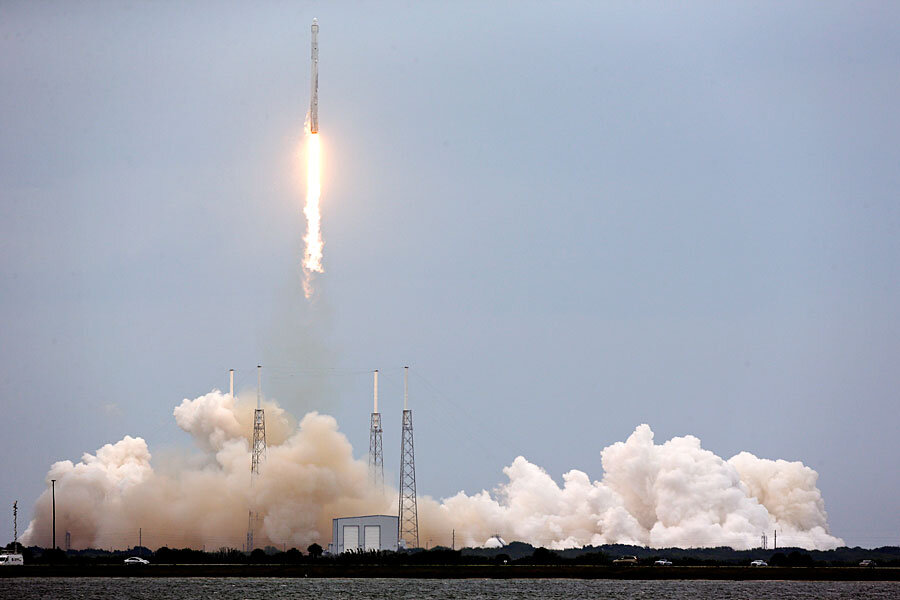On fourth try, SpaceX capsule en route to space station
Loading...
A cargo-laden capsule is on its way to the International Space Station after Space Exploration Technologies Corp. (SpaceX) successfully lofted the craft on Friday afternoon.
The company's Dragon capsule is expected to arrive Sunday morning after the company's Falcon 9 rocket, launched from the Cape Canaveral Air Force Station adjacent to NASA's Kennedy Space Center in Florida, placed it on orbit.
Friday was the fourth try for a mission originally scheduled for launch on March 16. One delay was attributed to an oil leak in the unpressurized portion of the Dragon capsule, a second to a malfunction in one of the Air Force's tracking radars, and a third to a helium leak in the rocket.
Foul weather overnight Thursday and overcast skies Friday dropped the likelihood of launch to about 30 to 40 percent. But the weather conditions eased up enough to allow for Friday's launch at 3:25 p.m., Eastern Daylight Time.
"The rocket flight was perfect, as far as we could tell, and the Dragon deployment went well," said Elon Musk, SpaceX's chief executive officer and chief designer, during a postlaunch briefing.
With the capsule safely on its way, attention quickly turned to the performance of the Falcon 9's first stage. The company used a version upgraded with technology that will allow it to return to its launchpad and touch down under its own power. The goal is to have a rocket that is fully reusable.
Friday's launch was the first experiment with the system, which includes beefed-up thrusters and four 25-foot legs that sprout from the booster as it descends.
After separation from the second stage, which carried the capsule to its intended orbit, the booster successfully oriented itself for reentry. Initial telemetry readings also indicated that it made it through another crucial stage of the descent, when it's subject to the highest levels of aerodynamic stress it would encounter on the way down.
The SpaceX team received additional telemetry early Friday evening, which it will analyze to see how the rest of the descent went.
Seas were running at between 15 and 20 feet in the splashdown area between 250 and 300 miles from the launch site. Heavy seas prevented SpaceX from recovering the booster, and conditions made it highly unlikely that the first stage made a powered landing into the ocean, Mr. Musk said.
Still, the initial data about the system's overall performance are encouraging, he said.
"In order to have reuse have a big effect on the space industry, the reuse must be both rapid and complete," he said.
Friday's experience leaves him "a bit more optimistic" that the company will be able to recover a booster from a launch scheduled for later this year.
"I'm not sure we'll be able to re-fly it this year, but I think re-flying it next year is likely" if the team can recover a booster this year.
"That will complete the picture as far as the boost stage is concerned," he said.








